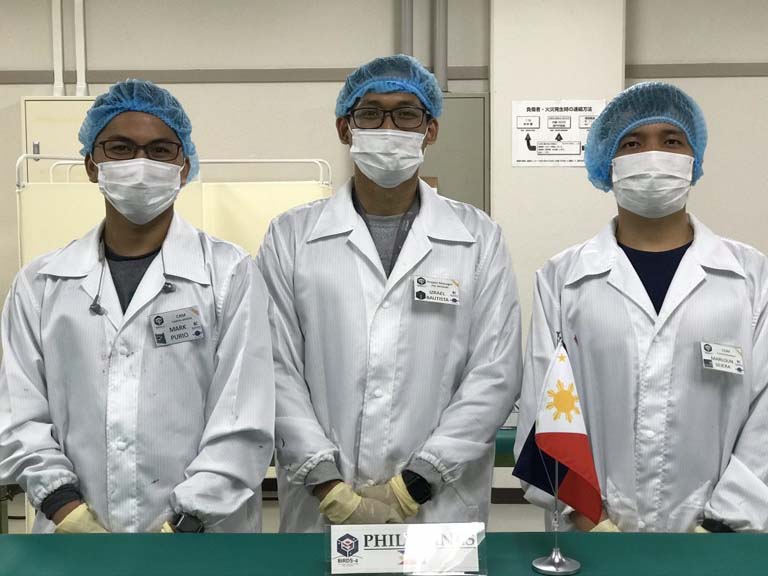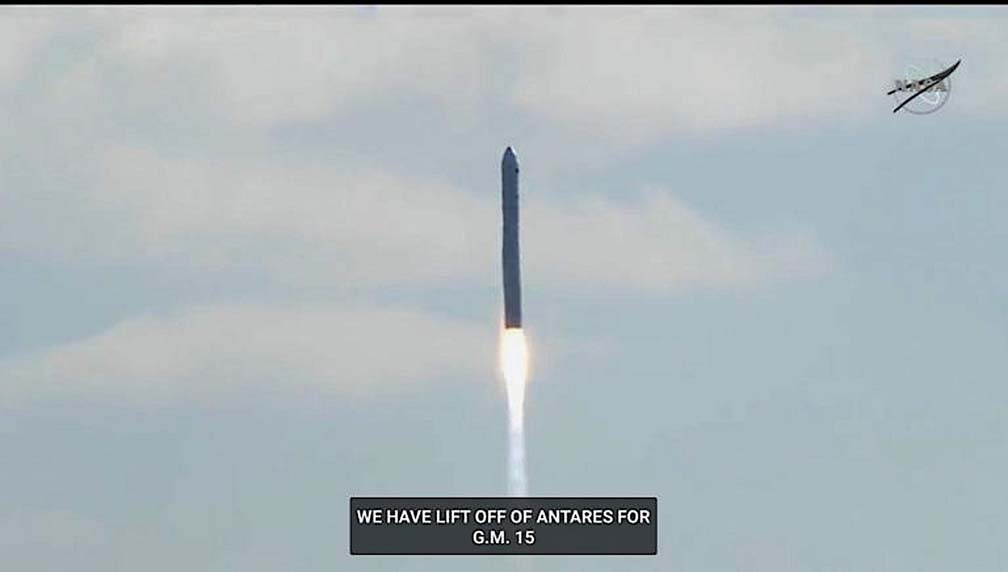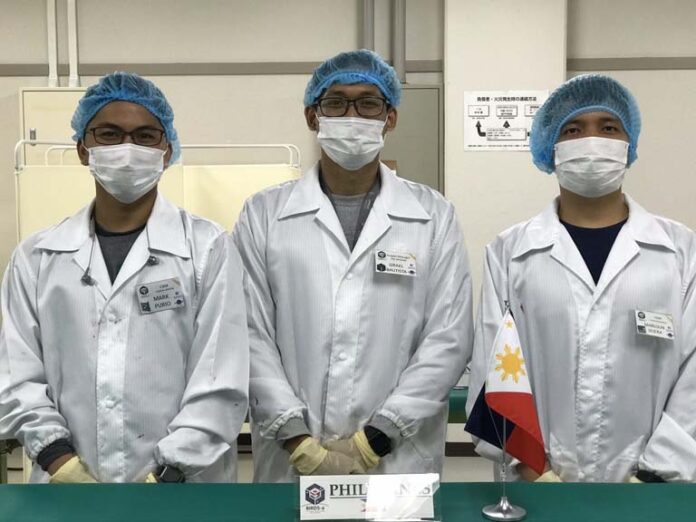THE Philippines on Sunday marked another historic moment with the launching of its second cube satellite (cubesat) Maya-2 to the International Space Station (ISS) aboard the S.S. Katherine Johnson Cygnus spacecraft at 1:36 a.m. Philippine time.
Sending the satellite into the ISS is the final step before the satellite reaches its targeted altitude in Low Earth Orbit, when the space station deploys it at a later date.
Science Secretary Fortunato T. de la Peña said the Department of Science and Technology (DOST) is “very proud of this achievement.”
For his part, Philippine Space Agency (PhilSA) Director General Joel Joseph S. Marciano Jr. said, “To do something for the first time is great, but to be able to do it again and innovate is greater.”
Marciano added in a news release, “We take pride in the launch of Maya-2, the successor to Maya-1 and the Philippines’s latest milestone in creating value in space for and from Filipinos and for the world.”
The 1U cubesat, a nanosatellite with a mass of 1kg to10 kg, Maya-2 was “designed and developed by Filipino scholars“ who were sent to Japan‘s Kyushu Institute of Technology (Kyutech) through the Space Science and Technology Proliferation through University Partnerships (STeP-UP) Project of the Space Technology and Applications Mastery, Innovation and Advancement (Stamina4Space) Program.

Maya-2 was launched to the ISS with two other identical CubeSats from Japan (Tsuru), and Paraguay (GuaraniSat-1). It is part of the Northrop Grumman CRS-15 mission.
All three nanosats were developed under the Kyushu Institute of Technology (Kyutech)’s fourth Joint Global Multi-Nation Birds Satellite (Birds-4) Project.
After Maya-2’s launch, the team is finalizing the mission operation for the first 24 hours, first week and first month.
“We are also preparing to coordinate with ground stations of the Birds network to ask for their help and cooperation in operating the satellites once deployed in orbit,” said Birds-4 Project Manager Engr. Izrael Bautista.
Engr. Mark Angelo Purio, one of the Maya-2 engineers, said the development of Maya-2, and Birds-4 satellites in general, was special due to the fact that it was affected by the pandemic.

“Not being able to gather physically also added to the challenges we faced during the final stages of the project as most of the work, such as troubleshooting and finalizing software and satellite assembly, were done with less people from the team,” Purio said in describing the challenges they faced.
“It is such a wonderful experience to have worked with people from different backgrounds and nations. The commitment, contribution and effort each member has put on to the satellite development are testaments that the team has made a bond,” he added.
Maya-2’s other engineers are Izrael Zenar Bautista and Marloun Sejera.
Philippine space program
De la Peña recalled in a press statement that since DOST started the Philippine Space Technology Development Program in 2014, the country has sent orbiting into space two microsatellites—Diwata-1 and Diwata-2—and two nanosatellites—Maya 1 and Maya-2.
DOST’s Advanced Science and Technology Institute (ASTI) and the University of the Philippines Diliman’s Institute of Electrical and Electronics Engineering (UP IEEE) have been the implementors of the satellite development projects with assistance from two Japanese universities, Hokkaido University and Tohoku University, he said.
De La Peña said the succeeding microsatellites Diwata-3 and Diwata-4 and nanosatellites Maya-3 to Maya-6 “are now in various stages of development, now done completely in the Philippines.”
The program, he added, “will now transition into the leadership of our newly established Philippine Space Agency. All of us should be proud of the fast progress that the Philippines has made in this area considering that we started only in 2014. There are many aspects of governance which will be assisted by space technologies.”
More Maya cubesat launches
The Philippines expects more Maya cubesat launches in the near future with Maya-3, Maya-4, Maya-5 and Maya-6 already in their respective design and development phases under the STeP-UP project led by Prof. Paul Jason Co.
“Maya-2 is the manifestation of our country’s commitment to build and sustain our own SSTA ecosystem,” Co said. “This is but another step in our long journey as a space-faring nation.”
“Having reached the point of sending the Maya-2 CubeSat for launch, it is a proud and anxious moment not only for the STep-Up scholars, but also for the rest of the Stamina4Space Program,’’ said Dr. Maricor Soriano, Samina4Space Program Leader and Project Leader of the program’s Optical Payload Technology, In-depth Knowledge Acquisition, and Localization component.
“Proud, in that, after all the challenges the scholars went through, including working amid the pandemic, they passed all the qualifications for launch; and anxious, because the next step is to await signals from Maya-2 in orbit. But this is what building technology for space is really like. And we feel thankful for the opportunity to learn. Congratulations to our STep-UP scholars!” Soriano said.
Like its predecessor Maya-1, which was decommissioned on November 23, 2020, Maya-2 is a technology demonstration and educational platform geared to collect data remotely by Store-and-Forward Mechanism.
Aboard the 1.3 kg-satellite is a camera for image and video capture, an Automatic Packet Reporting System Message Digipeater, attitude determination and control units for active attitude stabilization and control demonstrations, Perovskite solar cells and Latchup-detection chip.
Apart from the similarity of the platforms, Maya-2 was developed and improved using the knowledge gained from developing its predecessor.
The development of Maya-2 under the Birds-4 Project started in 2018 and was affected by the Covid-19 pandemic. Although they faced hurdles, the team of Filipino engineers were able to power through.
More than creating nanosatellites, sustaining local cubesat research and development “is important because it would potentially lead to a systems engineering mindset our researchers, and local partners that can co-develop the our space industry,” Soriano explained.
“It could [also] enhance Science Technology and Engineering curricula in K-12 and higher education,” Soriano said.
With the country now having its Philippine Space Agency (PhilSA), it can be confident that its space research and development activities will be sustained and built on, Marciano said.
“We congratulate our Birds-4 Filipino engineers—IZ, Mark, and Marloun—and the rest of the Stamina4Space team,” Marciano said. “The PhilSA is building on your accomplishments to bridge, uplift and empower our nation through space.”
Stamina4Space is funded by the DOST, monitored by DOST’s Philippine Council for Innovation, Energy, and Emerging Technology Research and Development, and implemented by DOST-Advanced Science and Technology Institute, and University of the Philippines Diliman.



